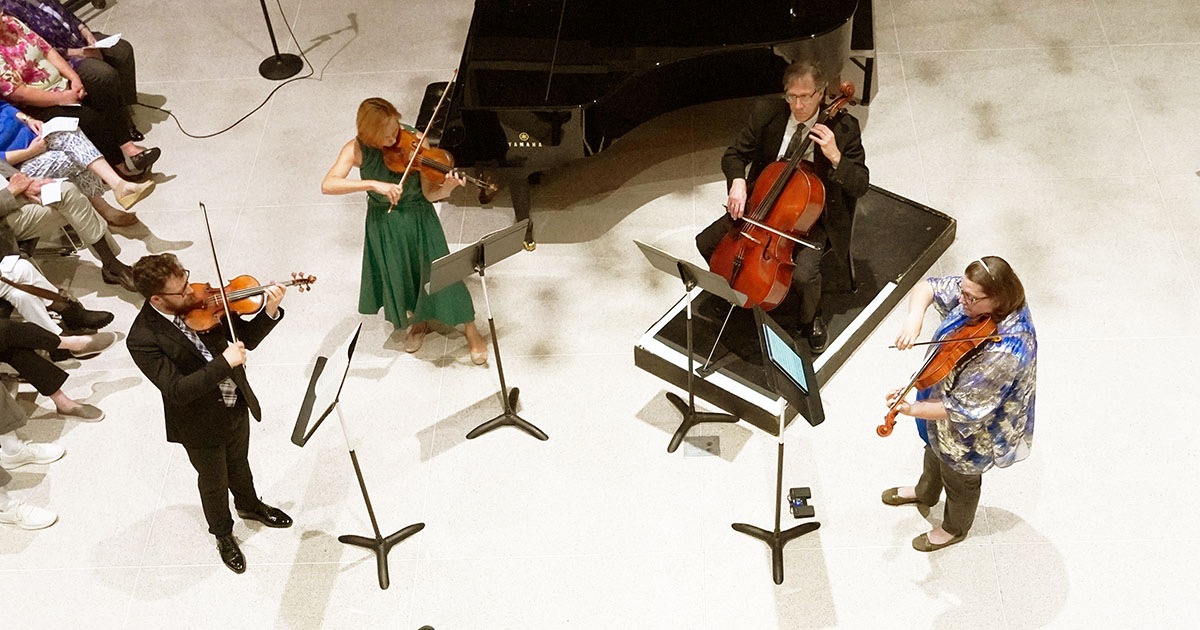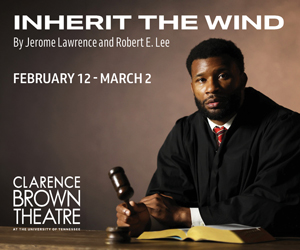The Knoxville Symphony Orchestra’s Concertmaster Series with William Shaub has one more performance of “The Late Genius: Beethoven’s Final Days”, Thursday evening, April 6, at 7:00, at the Knoxville Museum of Art. Tickets and Information
The Knoxville Symphony Orchestra’s Concertmaster Series, hosted by Concertmaster William Shaub and performed with his orchestra colleagues, has traditionally followed a simple plan: a first half of short virtuosic violin works by Shaub often with accompanying pianist Kevin Class; and a second half featuring a major ensemble piece of chamber music. In a departure, this week’s concert—the final one in the 2022-23 season—took a slightly different turn. Two substantial works by Ludwig van Beethoven—the early Violin Sonata No. 4, op. 23, and the composer’s final string quartet, the opus 135— sandwiched some tasty musical morsels. Alexandra T. Bryant’s The Open for violin & piano from 2008 featured some visual accompaniment from paintings from the Knoxville Museum of Art’s collection. After intermission, Concertmaster Shaub was joined by violinist Edward Pulgar for Joseph Bologne’s (aka Chevalier de Saint-Georges) Duo No. 1 in B-flat Major.
Many U.S. orchestras, including the KSO, have taken part over the last few years in rescuing the music of Joseph Bologne from the dusty shelves of music history. While a lot of focus has been on Bologne’s symphonies and concertos, the duo heard here, performed with a lot of energetic charm by Shaub and Pulgar, was a notable example of his chamber works. Bologne was a noted violinist whose abilities are certainly reflected in the melodic intricacies he developed in the work. Note: curious listeners may want to check out a major feature film, Chevalier, based on the life of Bologne, that is set to open in theaters this month.
Giving a spotlight to contemporary women composers has been an essential and important part of the KSO’s programming of late. Shaub’s inclusion of Alexandra T. Bryant and her The Open was a welcome introduction to the composer, particularly notable since the work was commissioned by William Preucil, a former concertmaster of the Cleveland Orchestra.
While the use of accompanying images can often overwhelm performed music and relegate it to being secondary in importance, the scheme seemed to work in this instance. The four movements of Bryant’s evocative work were each paired with a similarly evocative work of local inspiration from the collection of the museum: Rudolph Ingerle’s Smoky Mountains (1920); James Cameron’s Belle Isle from Lyons View (1859); Danny Lyon’s photograph Carnival Workers a Tennessee Valley Fair (1967); and Catherine Wiley’s Woman and a Child in a Meadow (1913).
The evening concluded with Beethoven’s last completed work, the String Quartet No. 16 in F Major, Op. 135. For this performance, Shaub enlisted his violin colleague, Zofia Glashauser, KSO principal violist Kathryn Gawne, and KSO principal cellist Andy Bryenton.
As testament to the genius of Beethoven, the work reaches the ear without apparent difficulty. The work’s deceptive difficulty, though, lies in its depth and lack of specific conversation between instruments, probably a product of the composer’s deafness. Commentary and complex harmonic reaction substitute for what one might normally expect from the interplay. In the hands of Shaub and colleagues, the rendering had just the right amount of ensemble-ness and beautifully spirited playing.
The second movement, Vivace, took the listener down a different sort of troubled path, one of sharp stones and hard edges that ends in closed gate. The third movement, Lento assai, cantante e tranqillo, takes one a bit by surprise in its gentle repose and betrays its reality of being a late edition to the other three movements. In the final movement, the quartet made quite the show of Beethoven’s mature writing, a show that is brilliantly assertive, but joyous in its spirit. Kudos to the ensemble for revealing the depth of the composer’s state of mind in his final moments of magnificent creation.






